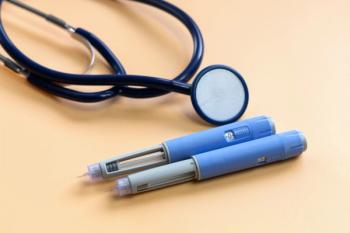
- October 2018 Diabetes
- Volume 84
- Issue 10
Provision of Diabetes Sick-Day Plans in the Community Pharmacy
As community pharmacists, we are often the most accessible members of the health care team.
As community pharmacists, we are often the most accessible members of the health care team. This is both a privilege and a burden. We are often the first to identify gaps in patient care, yet we are not always equipped to close those gaps. Even in times that we are, it is all too easy to assume that someone else on the health care team has already broached the problem with the patient. In our practice, we identified 1 such example as diabetes sick-day plans.
We fill prescriptions for patients with diabetes daily yet miss several opportunities to make sure that they can appropriately problem solve during times of illness. During medication therapy management ses- sions, community pharmacists are often prompted to ask patients with diabetes if they have a diabetes sick- day plan. We document within the billing platform whether they have one, but what happens next can vary depending on the pharmacist. Pharmacists often do not feel comfortable or empowered to develop plans for patients. Some pharmacists might encourage a patient to “be sure to ask your doctor for a plan at your next appointment.” Those familiar with the diabetes education process might assume that this was covered previously and not even ask a patient.
Just 6.8% of those with newly diagnosed type 2 diabetes who have private health insurance participate in a formal diabetes education program within 1 year of diagnosis, according to the National Standards for Diabetes Self-Management Education and Support. And just 4% of Medicare patients receive diabetes education during this time frame.
During acute illness, it often becomes difficult for patients with diabetes to control their blood glucose levels. Many do not maintain medication adherence if they are unable to drink fluids and eat as usual. They think that if they are too sick to eat, then they likely do not need medication to lower their blood sugar level— when their blood sugar lever actually is higher because of the illness. As blood glucose levels surpass 250 mg/ dL, the risk for complications increases, including developing ketoacidosis. To solve this common problem, we set out to screen at-risk patients with diabetes at our community pharmacy in order to avoid adverse outcomes because of acute illness.
Our initial target population included patients with diabetes who are prescribed insulin. Subjects were screened over a 4-month period and were identified in 4 ways: at on-site American Association of Diabetes Educators (AADE)-accredited diabetes education classes, at monthly support group meetings, during the final verification process, and using retrospective dispensing data. Four months was chosen as the time frame so we could identify patients within an entire dispensing cycle, regardless of 90-day prescriptions. Pharmacy staff members were prompted at the point of sale to ask patients if they had a plan to control blood glucose during illness. If patients reported no such education, the pharmacist provided counseling and a hard-copy diabetes sick-day plan. Patients identified via dispensing data were mailed a copy of the diabetes sick-day plan and were counseled over the telephone. Patients identified during support group meetings and AADE education classes were screened throughout the education process and provided a plan at that time.
Since the conclusion of the 4-month study, it has become evident that screening and diabetes sick-day plan implementation should extend beyond an abstract date. Community pharmacists across the nation also can be better equipped to help patients with diabetes manage sick-day complications, based on our findings.
We identified 68 eligible patients during preliminary screening. Of those, 98.5% (67) said that they had never been educated about blood glucose manage- ment during acute illness. The patient who reported receiving a diabetes sick-day plan agreed to review our handout with a pharmacist. When discussing the upper blood glucose limit for which they sought urgent care, no patients reported knowledge as to when to seek help.
Based on these findings, it appeared that most patients being prescribed insulin were not educated about blood glucose management during an illness. During the patient education process, it was just as rare that insulin-prescribed patients were aware of what constituted an unsafe blood glucose level. Research is needed to assess the effectiveness of having a predetermined diabetes sick-day plan to reduce poor outcomes among patients with diabetes. However, if pharmacists want additional seats at the provider table, they can start by providing diabetes sick-day plans to patients who need them.
Travis Wolff, PharmD, BCACP, is an ambulatorycare pharmacist and co-owner of Med-World Pharmacy in Sapulpa, Oklahoma, where he serves as the residency program director of the PGY1 community pharmacy residency. Tyler Ratliff, PharmD, is a pharmacist at Graves Drug in Winfield, Kansas.
Articles in this issue
about 7 years ago
Make a Point of Preventing Insulin Pen Errorsabout 7 years ago
There Is an App for Thatabout 7 years ago
Obesity Is a Weight-Loss Maintenance Problemabout 7 years ago
Valproic Acid and Carbapenem Antibiotics Interactionabout 7 years ago
Saturated Fat and Cardiovascular Diseaseabout 7 years ago
An Unsafe Practice: Reuse of Prefilled Saline Flushabout 7 years ago
Nonprescription Products for Proper Diabetic Foot Careabout 7 years ago
Kentucky Bans Pharmacy Gag Clausesabout 7 years ago
Handling Prior Authorization Requests: Revisited on AppealNewsletter
Stay informed on drug updates, treatment guidelines, and pharmacy practice trends—subscribe to Pharmacy Times for weekly clinical insights.


















































































































































































































